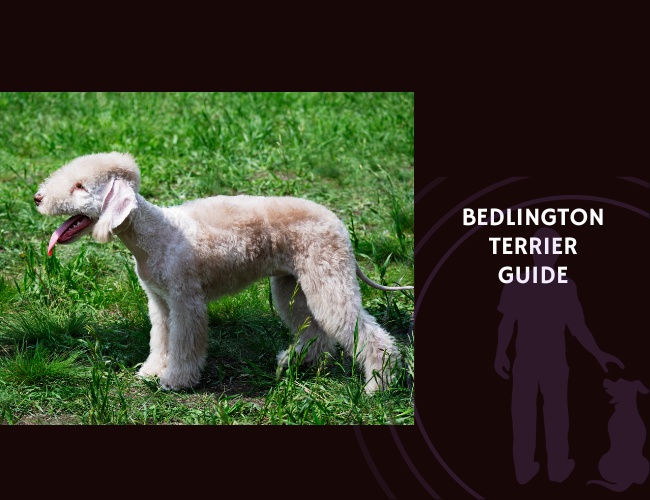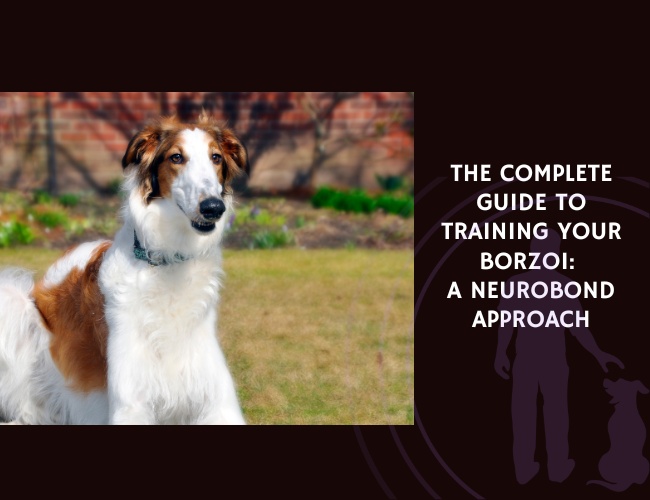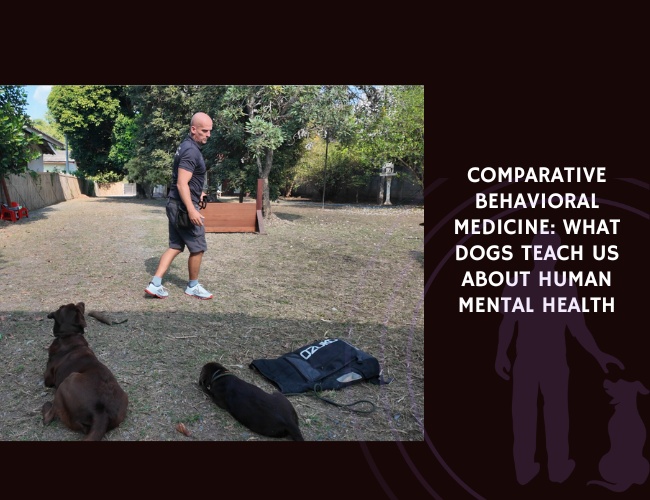Introduction
Picture a dog that looks like a lamb but possesses the heart of a lion—that’s the enchanting paradox of the Bedlington Terrier. With their distinctive curved silhouette and woolly coat, these elegant terriers might deceive you into thinking they’re gentle lapdogs, yet beneath that sheep-like exterior beats the fierce heart of a true working terrier. Born in the mining towns of Northumberland in the early 1800s, the Bedlington Terrier emerged from humble beginnings to become one of the most distinctive and versatile breeds in the canine world.
Did you know that these lamb-like dogs were once called “the miner’s friend” and could reach speeds of up to 35 mph when chasing prey? Their unique combination of Whippet speed, terrier tenacity, and remarkable swimming ability created a breed unlike any other. Today’s Bedlington retains all the courage and intelligence of their working ancestors, wrapped in a package that’s both sophisticated and surprisingly athletic. Let us guide you through understanding this remarkable breed—a dog that seamlessly transitions from gentle family companion to determined hunter at a moment’s notice. 🐾
Character & Behaviour
Historical Role and Work Ethic: Understanding Your Bedlington’s Heritage
The Bedlington Terrier’s fascinating journey began in the mining town of Bedlington, Northumberland, where hardworking miners and nail makers needed a versatile companion that could earn its keep. Originally called the Rothbury or Rodbury Terrier, these remarkable dogs weren’t just pets—they were essential workers who hunted vermin above and below ground, chased rabbits for the pot, and even participated in the rough sports of dog racing and fighting rings that characterized working-class entertainment of the era.
You might notice your modern Bedlington displaying behaviors that echo this rich heritage. Their development incorporated Whippet blood for lightning speed, Dandie Dinmont for unwavering tenacity, and possibly Otterhound for their surprising swimming prowess. This diverse genetic cocktail produced a dog capable of:
- Pursuing badgers into their setts with remarkable courage
- Swimming after otters in cold northern rivers
- Coursing hares at breathtaking speeds
- Eliminating rats from mines and homes with ruthless efficiency
This working heritage created the paradoxical breed we know today—a dog that appears elegant and refined yet possesses the courage to face down a badger without hesitation. When you see your Bedlington suddenly switch from lounging gracefully to intense focus at the sight of a squirrel, you’re witnessing centuries of selective breeding in action.
Temperament Profile: The Two Faces of Your Furry Friend
Living with a Bedlington means embracing their fascinating dual personality. At home, these dogs display an almost cat-like affection with family members, often choosing one special person to shadow throughout the day. You’ll find your Bedlington following you from room to room, not with the demanding energy of some breeds, but with a quiet, devoted presence that brings comfort without being overwhelming.
With your family, Bedlingtons show:
- Patient tolerance with children when properly socialized
- Gentle affection that intensifies over time
- Alert watchfulness without excessive barking
- Strong bonds that deepen with consistent interaction
However, their terrier nature means they won’t tolerate rough handling—teaching children respectful interaction is essential. When strangers arrive, you might notice your Bedlington’s response varies individually. Some remain elegantly aloof, assessing newcomers from a distance, while others warm up quickly after that initial moment of reserve.
Same-sex aggression remains a significant trait requiring careful management. Male Bedlingtons, in particular, may not appreciate the company of other male dogs, carrying forward the competitive spirit of their fighting-ring ancestors. This doesn’t mean they can’t live with other dogs, but it does mean you’ll need to be thoughtful about introductions and ongoing management in multi-dog households.
Cognitive and Problem-Solving Skills: A Mind That Never Rests
Your Bedlington possesses above-average intelligence paired with the independent thinking that characterizes true terriers. They excel at problem-solving when motivated—but here’s the key: they need to see the benefit. This isn’t a breed that performs simply to please you; they’re constantly calculating whether compliance serves their interests.
Watch your Bedlington work through a puzzle toy, and you’ll see their cognitive flexibility in action. They approach challenges methodically, trying different strategies until they succeed. This same intelligence means they’ll quickly identify weaknesses in your household rules. Did you forget to latch the garden gate properly? Your Bedlington noticed. Is there a gap under the fence just wide enough for investigation? They’ve already measured it with their eyes.
Their environmental awareness is remarkable—they can switch from calm house pet to intense hunter in milliseconds, demonstrating a mental agility that matches their physical prowess. This cognitive sharpness makes them excellent problem solvers but also means they need consistent mental stimulation to prevent boredom-induced mischief.
Prey and Chase Drive: When the Hunter Awakens
The sighthound influence in your Bedlington’s ancestry manifests powerfully in their prey drive. Movement—any movement—can trigger an almost irresistible chase response that overrides years of training in an instant. That gentle dog who cuddles on your sofa transforms into a focused predator at the sight of a running rabbit, cat, or even a windblown plastic bag.
Their visual acuity exceeds typical terriers, allowing them to spot movement at considerable distances. You might notice your Bedlington suddenly freeze during a walk, staring intently at something you can’t even see yet. Seconds later, a bird takes flight from a distant tree, and you realize your dog detected that tiny movement long before you did.
This intense prey drive means:
- Cats and Bedlingtons require extremely careful management, even when raised together
- Small pets like rabbits or guinea pigs should never be left unsupervised with your Bedlington
- Off-leash reliability becomes challenging in areas with wildlife
- Secure fencing is absolutely essential for safe outdoor time
Even Bedlingtons raised with cats from puppyhood may struggle with impulse control when encountering unfamiliar cats outdoors. The movement triggers something primal that can override socialization—understanding and respecting this aspect of their nature keeps everyone safe. 🧠
Stress Responses and Emotional Regulation: Building Resilience
Bedlingtons demonstrate moderate stress resilience, generally recovering well from routine changes but potentially developing anxiety if their needs aren’t met. You’ll notice they cope with stress through activity—a stressed Bedlington might dig obsessively, pace restlessly, or engage in destructive chewing. These aren’t acts of spite; they’re attempts at self-soothing.
Early confidence building proves crucial for preventing timidity or fear-based aggression. A well-adjusted Bedlington handles life’s surprises with aplomb, while one lacking early positive experiences might react defensively to new situations. Signs your Bedlington is stressed include:
- Excessive grooming to the point of creating bald spots
- Increased vigilance and inability to settle
- Digestive upset during times of change
- Regression in house training or other learned behaviors
Creating predictable routines helps your Bedlington feel secure, while gradual exposure to new experiences builds their confidence. Remember, this breed’s sensitive nature means harsh corrections or chaotic environments can create lasting anxiety issues.
Training & Education
Early Socialisation: Building Your Puppy’s Foundation
The critical socialization window between 3-14 weeks represents your golden opportunity to shape your Bedlington’s future temperament. During this period, your puppy’s brain is remarkably plastic, forming associations that will influence their behavior throughout life. You’ll want to provide extensive positive exposure to diverse people, animals, and environments—but quality matters more than quantity.
Puppy classes starting at 8-10 weeks help establish appropriate play styles and reduce the likelihood of later same-sex aggression. Look for classes that:
- Use positive reinforcement methods exclusively
- Separate puppies by size and play style
- Include handling exercises and novel experiences
- Teach both puppies and owners
Urban puppies need particular attention to city life preparation. The sounds of traffic, the sight of crowds, the smell of countless strangers—these can overwhelm a young Bedlington without proper introduction. Start with distance and low intensity, gradually decreasing distance as your puppy shows comfort. That confident adult Bedlington strutting down a busy street? They started with careful, positive exposure as a tiny puppy.
For rural puppies, focus on:
- Livestock exposure (from a safe distance) to reduce chase instincts
- Vehicle variety beyond just your family car
- Different surfaces like metal grates, wooden bridges, and slippery floors
- Stranger interaction since rural dogs meet fewer people naturally
Obedience and Terrier Independence: Working With, Not Against, Their Nature
Training success with your Bedlington depends on making compliance more rewarding than independence—no small feat with a breed bred to think for themselves in underground tunnels. You’re not dealing with a Border Collie who lives to please or a Labrador who thinks training is the best game ever. Your Bedlington asks, “What’s in it for me?” and you’d better have a good answer.
Short, varied sessions of 5-10 minutes maintain engagement far better than lengthy drills. Your Bedlington’s attention span for repetitive tasks is limited, but their enthusiasm for novel challenges is boundless. Mix obedience work with trick training, scent games, and problem-solving to keep their interest. A training session might look like:
- 2 minutes of loose leash walking practice
- 1 minute of “leave it” practice with increasing distractions
- 2 minutes of trick training (spin, bow, wave)
- 1 minute of impulse control games (wait for release to get toy)
- 2 minutes of scent work finding hidden treats
- 2 minutes of recall practice with play rewards
Positive reinforcement using high-value rewards works effectively—think tiny pieces of cheese, freeze-dried liver, or a quick game of tug. The key is finding what motivates YOUR individual dog. Some Bedlingtons work for food, others for play, and some for the opportunity to chase a flirt pole.
Harsh corrections trigger that famous terrier stubbornness. Yell at a Bedlington, and watch them shut down or, worse, decide you’re not worth listening to. They have long memories for unfair treatment and will hold grudges. Instead, use:
- Redirecting unwanted behavior to acceptable alternatives
- Management to prevent mistakes while learning
- Consistency across all family members (they will exploit inconsistencies!)
- Patience when they’re testing boundaries
Recall and Off-Leash Reliability: The Ultimate Challenge
Let’s be honest—achieving reliable recall with a Bedlington Terrier when prey is present might be your biggest training challenge. That genetic programming to chase runs deeper than any amount of cheese can overcome. However, you can build a strong recall for normal circumstances while accepting limitations.
Begin recall training in secure, boring environments—your hallway, a small fenced yard, an empty tennis court. Use a consistent recall word that you don’t use in daily conversation (“come” gets overused and loses meaning). Make returning to you the best thing that ever happens to your dog:
- Call once, clearly and happily
- Reward generously—multiple treats, excited praise, play
- Release them to go back to what they were doing
- Practice when they’re already moving toward you to build success
Progress to a long line (30-50 feet) in more distracting environments. This isn’t about using the line to reel them in—it’s insurance while they learn. If they don’t respond to your recall:
- Don’t repeat the command
- Move away from them, acting excited about something
- When they come to investigate, reward heavily
- If they still don’t come, calmly walk to them and guide them back
Many experienced Bedlington owners accept that 100% recall reliability may never occur when prey is present. They opt for secure exercise areas, long lines in open spaces, and careful management rather than risking their dog’s safety. There’s no shame in acknowledging your breed’s limitations—it’s responsible ownership. 🐾
Impulse Control and Household Manners: Civilizing Your Little Lion
Teaching impulse control helps manage that terrier impulsiveness that can turn your Bedlington from angel to mischief-maker in seconds. The foundation commands—”leave it,” “wait,” and “settle”—become your tools for civilized living.
“Leave it” might save your Bedlington’s life someday. Start with low-value items, rewarding from your hand when they look away from the forbidden object. Gradually increase difficulty:
- Food on the ground (covered by your foot initially)
- Food on coffee table height
- Moving objects (rolled ball)
- Outdoor temptations (stick, interesting smell)
“Wait” differs from “stay”—it’s a temporary pause, not a formal position. Use it at doors, before meals, getting in/out of cars. Your Bedlington learns that patience brings rewards, not that they’re being controlled for no reason.
Digging management requires creativity rather than suppression. Bedlingtons dig—it’s in their job description. Provide a designated dig zone:
- Choose a corner of your garden
- Bury toys and treats regularly
- Redirect all digging attempts to this spot
- Make other areas less appealing (chicken wire under soil, citrus peels)
Barking responds well to teaching “quiet” paired with incompatible behaviors. When your Bedlington alerts to something:
- Acknowledge what they’re telling you (“Thank you, I see it”)
- Ask for “quiet” and immediately request a toy fetch
- Reward the quiet behavior, not just the fetch
- Gradually extend quiet duration before rewarding

Specialized Skills Development: Channeling Their Talents
Your Bedlington’s unique combination of speed, agility, and intelligence opens doors to various dog sports that satisfy their working heritage while strengthening your bond.
Agility suits Bedlingtons perfectly, combining:
- Physical challenge that uses their athleticism
- Mental problem-solving navigating courses
- Working partnership with you
- Safe, controlled environment for their speed
Start with foundation skills at home—walking on wobble boards, through ladder rungs, over low jumps. Join a positive reinforcement-based club when your dog is physically mature (12-15 months for full jumping).
Lure coursing satisfies those sighthound genes safely. Watching your Bedlington chase a plastic bag on a string around a field might seem silly, but you’re witnessing pure joy. They’ll run at top speed, making sharp turns, completely absorbed in the chase. It’s therapeutic for them and fascinating for you.
Fast CAT (Coursing Ability Test) offers a simpler version—100-yard straight sprint chasing a lure. Your Bedlington can earn titles while doing what they love most: running fast after moving things.
Earthdog trials, though less common in the UK, appeal to their tunneling heritage. Even if you don’t compete, creating tunnel challenges in your garden with children’s play tunnels or cardboard boxes satisfies their underground hunting instincts.
Rally obedience suits their intelligence while accommodating independent thinking better than traditional obedience. You navigate a course together, performing various exercises at signs. It’s less rigid than formal obedience but still challenges their training. Your Bedlington might add their own flair to exercises, which often entertains judges and spectators even if it doesn’t win top scores! 😄
Nutritional Recommendations
Diet for Active Medium-Sized Dogs: Fueling Your Energetic Companion
Your adult Bedlington, typically weighing between 17-23 pounds, requires approximately 600-900 calories daily, though this varies significantly based on activity level, age, and metabolism. That couch-loving senior needs far fewer calories than your agility-competing youngster. You’ll want to monitor body condition regularly—you should easily feel ribs with light pressure but not see them prominently.
Protein should comprise 22-26% of their diet (dry matter basis) from high-quality animal sources. Look for foods listing specific meats (chicken, lamb, salmon) rather than generic “meat meal” or “poultry by-products.” Your Bedlington’s athletic build requires quality protein for muscle maintenance, especially important for this active breed. Signs of adequate protein include:
- Maintained muscle mass even in senior years
- Good energy levels throughout the day
- Healthy, properly colored coat
- Strong immune system response
Fat content of 12-15% supports their luxurious coat health and provides concentrated energy for those bursts of speed. Too little fat leaves coats dull and dogs lethargic; too much leads to weight gain that stresses joints. Omega-3 and omega-6 fatty acids in proper ratio (between 1:5 and 1:10) promote skin health and reduce inflammation.
Complex carbohydrates from sources like sweet potatoes, brown rice, or oats provide sustained energy without the blood sugar spikes that can trigger hyperactivity. Avoid foods with corn or wheat as primary ingredients—while not inherently harmful, they offer less nutritional value and some Bedlingtons show sensitivities.
Liver Health Support: Managing Copper Storage Disease
Here’s where Bedlington nutrition becomes complex—copper toxicosis affects approximately 25% of the breed through genetic inheritance. This condition causes copper accumulation in liver cells, potentially leading to chronic hepatitis and cirrhosis. Even if your Bedlington tests clear for the genetic mutation, mindful copper management benefits long-term health.
Commercial diets should contain less than 5mg copper per 1000 kcal. This requires careful label reading and often contacting manufacturers directly, as copper levels aren’t always listed. Foods to strictly avoid include:
- Organ meats (especially liver—ironically)
- Shellfish and fish with high copper content
- Legumes like chickpeas and lentils in large quantities
- Copper-supplemented treats or supplements
Zinc supplementation at 2-3mg/kg body weight may help reduce copper absorption by competing for the same absorption pathways. However, don’t supplement without veterinary guidance—too much zinc causes its own problems. Your vet might recommend:
- Regular liver enzyme monitoring (every 6-12 months)
- Bile acid tests to assess liver function
- Possible liver biopsy if enzymes elevate
- Chelation therapy for affected dogs
Consider home-cooking or raw feeding for ultimate copper control, but only with veterinary nutritionist guidance to ensure balanced nutrition. Several commercial brands now offer low-copper formulas specifically for at-risk breeds—these can provide peace of mind while maintaining convenience.
Skin and Coat Nutrition: Maintaining That Lamb-Like Luxury
That distinctive Bedlington coat—crisp, linty, and standing well out from the skin—requires specific nutritional support. Unlike double-coated breeds, your Bedlington’s non-shedding coat grows continuously, making nutrition crucial for texture and health.
Omega-3 fatty acids (EPA/DHA) at 50-75mg/kg body weight optimize coat condition. These aren’t just about shine—they reduce skin inflammation, support the skin barrier, and may even reduce allergic reactions. Sources include:
- Fish oil supplements (choose molecularly distilled for purity)
- Whole fish like sardines or mackerel (watch copper content)
- Algae-based supplements for vegetarian options
- Krill oil for enhanced absorption
Biotin supplementation (2.5-5mg daily) specifically supports coat texture. Many Bedlington owners report improved coat quality within 6-8 weeks of biotin supplementation. You might notice:
- Improved coat density
- Better color retention
- Reduced breakage during grooming
- Faster regrowth after clipping
Quality proteins with balanced amino acids, particularly methionine and cysteine, maintain proper coat pigmentation and texture. Deficiencies might cause:
- Color fading or unusual color changes
- Brittle, breaking coat
- Slow regrowth after grooming
- Thinning in areas of friction
Don’t forget that external coat care supports nutritional efforts. Regular professional grooming every 6-8 weeks, proper bathing products, and protection from sun bleaching all complement good nutrition. 🧡
Digestive Health: Supporting Sensitive Systems
Some Bedlingtons display remarkable digestive sensitivity, requiring careful dietary management to prevent chronic issues. You might notice your dog develops loose stools, gas, or intermittent vomiting with certain foods. This isn’t necessarily an allergy—it could be intolerance or sensitivity requiring dietary adjustment.
Novel protein sources help identify triggers through elimination diets:
- Start with single protein source (lamb, venison, rabbit, fish)
- Feed exclusively for 8-12 weeks
- Monitor for improvement in symptoms
- Gradually reintroduce ingredients to identify triggers
- Keep a food diary noting reactions
Limited ingredient diets reduce variables while ensuring complete nutrition. Look for foods with:
- Single animal protein source
- Single carbohydrate source
- Minimal additional ingredients
- No artificial colors, flavors, or preservatives
Probiotics support gut health, particularly beneficial during:
- Dietary transitions (switch foods gradually over 7-10 days)
- Antibiotic treatment
- Stress periods (boarding, moving, new pets)
- Recovery from digestive upset
Choose probiotics with multiple strains and at least 1 billion CFU per dose. Some Bedlingtons benefit from continuous supplementation, while others need it only during challenges.
Small, frequent meals (2-3 daily) reduce bloat risk and maintain stable energy. While Bedlingtons aren’t high-risk for bloat like deep-chested breeds, their active nature combined with enthusiastic eating can cause problems. Feed at least an hour before or after exercise, and consider slow-feed bowls for gulpers.
Life Stage Nutrition: Adapting to Changing Needs
Your Bedlington’s nutritional needs evolve throughout their life, requiring thoughtful adjustments to maintain optimal health.
Puppyhood (8 weeks – 12 months) demands nutrition supporting rapid growth without encouraging excessive growth rate:
- 28-32% protein for proper muscle development
- Higher calorie density (up to 1,800 calories daily by 6 months)
- Multiple small meals (3-4 daily until 6 months)
- Calcium/phosphorus ratio between 1.2:1 and 1.5:1
- Transition to adult food at 10-12 months
Monitor growth rate carefully—Bedlington puppies should grow steadily, not rapidly. Overfeeding leading to accelerated growth can cause developmental orthopedic problems.
Adult maintenance (1-8 years) focuses on maintaining ideal weight and condition:
- Adjust calories based on activity level
- Monitor weight monthly (weekly during diet changes)
- Maintain consistent feeding schedule
- Consider seasonal adjustments (less in summer heat, more in winter cold)
Senior years (8+ years) require careful balance between maintaining muscle and preventing obesity:
- Reduce calories by 10-20% if activity decreases
- Maintain or slightly increase protein percentage (24-28%)
- Add joint supplements (glucosamine/chondroitin at therapeutic doses)
- Consider digestive enzymes if absorption decreases
- More frequent, smaller meals if appetite wanes
Watch for subtle signs of aging affecting nutrition:
- Dental issues requiring softer food
- Decreased smell affecting appetite
- Arthritis making eating positions uncomfortable
- Cognitive changes affecting feeding routine recognition
Remember, these are guidelines—your individual Bedlington might age faster or slower than average. Regular veterinary checkups help identify when dietary adjustments become necessary. 🐾
Elegant. Fierce. Devoted.
A lamb in disguise. With their woolly coat and graceful silhouette, Bedlington Terriers appear gentle, yet carry the fearless tenacity of their working heritage.
History forged resilience. From mines to rivers, they hunted vermin, coursed hares, and swam after otters—athletic, courageous companions bred for both speed and grit.
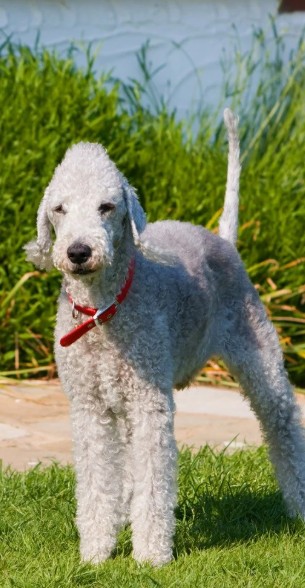
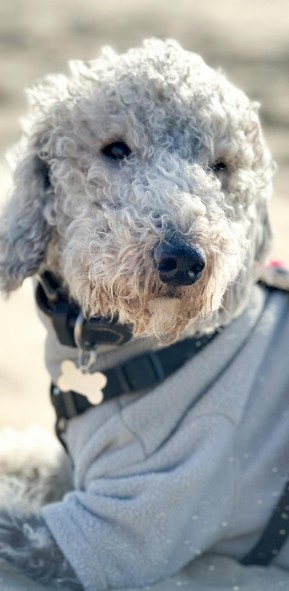
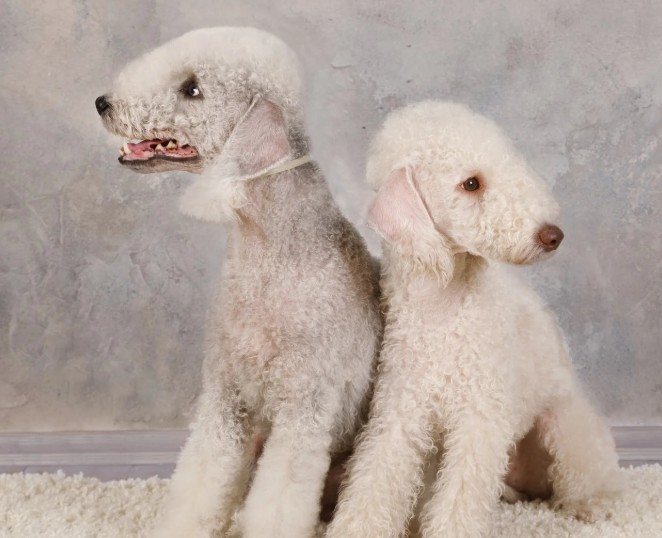
Dual nature defines them. At home they’re affectionate shadows, quiet and loyal, while outdoors their terrier spirit awakens—alert, determined, and always ready for action.
Health Concerns & Disease Susceptibilities
Hepatic Conditions: Understanding Copper Storage Disease
The most significant health concern facing the Bedlington Terrier breed is copper toxicosis (CT), affecting approximately 25% of dogs through autosomal recessive inheritance. This means dogs need two copies of the defective gene to develop the disease, but carriers with one copy can pass it to offspring. Understanding this condition empowers you to make informed decisions about testing, breeding, and management.
In affected dogs, the liver cannot properly excrete copper, leading to accumulation in liver cells. Over time, this causes:
- Chronic hepatitis with progressive liver damage
- Cirrhosis in advanced cases
- Acute hepatic necrosis during copper release episodes
- Secondary complications like ascites (fluid accumulation) and hepatic encephalopathy
DNA testing now identifies:
- Clear dogs (no copies of the mutation)
- Carriers (one copy—healthy but can pass to offspring)
- Affected dogs (two copies—will develop disease)
If your Bedlington tests affected, don’t panic. With proper management, many affected dogs live normal lifespans. Management includes:
- Dietary copper restriction (discussed in nutrition section)
- Regular monitoring of liver enzymes (ALT, AST, ALP)
- Chelation therapy with d-penicillamine when indicated
- Zinc supplementation to reduce copper absorption
- Avoiding stress triggers that can cause copper release
Early detection through DNA testing and proactive management makes the crucial difference. Even affected dogs can live happy, active lives with appropriate care. The key is knowing your dog’s status and acting accordingly.
Orthopaedic Disorders: Protecting Those Athletic Joints
Despite their moderate size and athletic build, Bedlingtons can develop orthopedic issues that impact quality of life. Understanding these conditions helps you recognize early signs and seek appropriate treatment.
Patellar luxation affects 5-10% of Bedlingtons, occurring when the kneecap dislocates from its normal groove. Severity ranges from Grade I (occasional luxation with spontaneous return) to Grade IV (permanent luxation with inability to manually replace). You might notice:
- Sudden lifting of affected leg mid-stride
- “Skipping” gait, particularly when running
- Reluctance to jump or climb stairs
- Sitting with affected leg extended to the side
Mild cases often require only weight management and muscle strengthening through controlled exercise. Severe cases may need surgical correction to prevent arthritis and maintain mobility.
Hip dysplasia, though less common than in larger breeds (affecting 3-5%), still warrants attention. Unlike the severe cases seen in giant breeds, Bedlington hip dysplasia often presents subtly:
- Reluctance to rise from rest
- “Bunny hopping” when running
- Decreased activity or play enthusiasm
- Muscle loss in hindquarters
Both conditions benefit significantly from maintaining lean body condition—every extra pound stresses compromised joints. Appropriate exercise builds supporting muscle without overloading joints:
- Swimming provides excellent low-impact conditioning
- Controlled leash walks on varied terrain build stability
- Avoid repetitive jumping or sharp turns until mature
- Consider physiotherapy for muscle strengthening
Ocular Concerns: Protecting Your Bedlington’s Vision
Several eye conditions occur in Bedlingtons with enough frequency to warrant regular screening, particularly for breeding animals.
Hereditary cataracts appear in 2-3% of Bedlingtons, typically developing between 6 months and 3 years. Unlike age-related cataracts, hereditary cataracts often affect young dogs bilaterally (both eyes) and can progress rapidly. Watch for:
- Cloudy or bluish appearance to pupils
- Bumping into objects in dim light
- Hesitancy navigating stairs or jumping
- Changes in eye color or pupil appearance
Early detection through annual eye exams allows monitoring of progression. While surgery can restore vision in severe cases, many dogs adapt remarkably well to vision loss in familiar environments.
Progressive retinal atrophy (PRA), though rare, causes irreversible vision loss through retinal degeneration. Initial night blindness progresses to complete blindness over months to years. No treatment exists, but DNA testing can identify carriers to prevent breeding affected dogs.
Entropion (inward-rolling eyelids) occasionally requires surgical correction to prevent corneal damage from eyelashes rubbing the eye surface. Signs include:
- Excessive tearing or squinting
- Rubbing at eyes
- Corneal ulcers or scarring
- Reluctance to open affected eye
Early surgical correction prevents permanent damage and preserves vision. The condition often has genetic components, so affected dogs shouldn’t be bred.
Endocrine and Metabolic Disorders: Hormonal Health Matters
Middle-aged and senior Bedlingtons may develop endocrine disorders requiring lifelong management but offering good prognosis with treatment.
Hypothyroidism affects the thyroid gland’s hormone production, causing metabolic slowdown. Classic signs include:
- Weight gain despite normal appetite
- Lethargy and exercise intolerance
- Coat changes (dullness, excessive shedding, slow regrowth)
- Cold intolerance
- Behavioral changes (mental dullness, anxiety)
Diagnosis requires complete thyroid panel, not just baseline T4. Daily thyroid supplementation typically restores normal function within weeks, though finding the correct dose may take several adjustments.
Cushing’s disease (hyperadrenocorticism) appears occasionally in senior Bedlingtons, caused by excessive cortisol production. Symptoms develop gradually:
- Increased thirst and urination
- Pot-bellied appearance
- Thin skin and poor wound healing
- Panting and restlessness
- Muscle weakness
Treatment depends on whether the pituitary or adrenal gland causes the problem. Medical management with trilostane or mitotane requires regular monitoring but can provide years of quality life.
Both conditions respond excellently to treatment when caught early through regular senior screening (annually after age 7, biannually after age 10).
Longevity and Genetic Diversity: Breeding for the Future
Bedlington Terriers enjoy relatively good longevity, with average lifespans of 12-14 years and some individuals reaching 16-17 years. Primary causes of mortality include:
- Liver disease (particularly in untreated copper toxicosis)
- Various cancers (lymphoma, hemangiosarcoma)
- Age-related organ failure
- Chronic kidney disease
The breed’s limited gene pool presents challenges for maintaining genetic diversity while reducing disease incidence. Responsible breeding practices include:
- Complete health testing (DNA for copper toxicosis, eye exams, hip scoring)
- Avoiding popular sire syndrome
- Considering genetic diversity in breeding decisions
- Maintaining detailed health records across generations
- International cooperation to broaden gene pools
Supporting responsible breeders who prioritize health testing and genetic diversity helps ensure future generations of healthy Bedlingtons. Ask to see health clearances, meet parent dogs, and understand the breeder’s goals beyond producing puppies. Your choices as a puppy buyer influence breed health for generations. 🧠

Attitude & Lifestyle
Exercise and Mental Stimulation: Meeting Your Bedlington’s Daily Needs
Your adult Bedlington requires 60-90 minutes of daily activity, but don’t imagine this means one long, boring walk. These intelligent, athletic dogs thrive on variety—mixing physical exercise with mental challenges keeps them balanced and content. Think of exercise as three components: physical conditioning, mental stimulation, and emotional satisfaction.
A well-exercised Bedlington is a joy to live with; an under-exercised one becomes creative in ways you won’t appreciate. You might structure their daily activity like this:
- Morning walk (30 minutes): Moderate pace with sniffing opportunities
- Midday brain game (15 minutes): Puzzle toys or training session
- Evening adventure (30-45 minutes): Free running, fetch, or agility practice
- Before-bed calm time (15 minutes): Gentle grooming or massage
Remember that mental stimulation can tire your Bedlington as effectively as physical exercise. Scent work particularly appeals to their hunting heritage:
- Hide treats around the house for “find it” games
- Create scent trails in the garden using diluted stock
- Teach them to identify specific scents (finding car keys!)
- Use snuffle mats or puzzle feeders for meals
Young dogs need controlled exercise following the “five minutes per month of age” rule—a three-month puppy needs only 15 minutes of structured exercise twice daily. Their growth plates don’t fully close until 12-14 months, and excessive exercise can cause permanent damage. However, free play at their own pace doesn’t count against this limit.
Weather rarely deters a Bedlington from needing exercise. Their woolly coat provides excellent insulation, though you’ll want to dry them thoroughly after wet walks to prevent skin issues. In extreme heat, shift exercise to early morning and late evening, and always provide fresh water.
Adaptability to Living Environments: From City Flat to Country Estate
One of the Bedlington’s greatest strengths is their remarkable adaptability to different living situations. These versatile dogs can thrive anywhere from a studio apartment to a sprawling farm—provided their exercise and companionship needs are met.
Apartment living suits Bedlingtons surprisingly well. They’re not excessive barkers (unless bored), and their moderate size means they don’t need massive spaces indoors. However, apartment life requires commitment to:
- Multiple daily outings for toileting and exercise
- Mental stimulation to compensate for lack of garden access
- Socialization to apartment life (elevators, hallway encounters)
- Management of their prey drive in close quarters with neighbors’ pets
Suburban homes with gardens offer ideal balance, but require specific preparations:
- Secure 6-foot fencing—Bedlingtons jump impressively when motivated
- Dig-proof barriers along fence lines (buried wire or concrete blocks)
- Locked gates—they’re clever enough to figure out latches
- Prey-proof boundaries—no gaps where cats might enter
Rural settings provide abundant exercise opportunities but present unique challenges:
- Livestock requires careful management—that herding instinct might activate
- Wildlife abundance triggers intense prey drive
- Less socialization opportunities need deliberate planning
- Roaming temptations require extra-secure boundaries
The key to any environment is understanding that Bedlingtons bond deeply with their people. A mansion feels like a prison if they’re left alone constantly, while a tiny flat becomes paradise when shared with their beloved human.
Climate Tolerance: Comfort in All Seasons
That distinctive Bedlington coat—non-shedding and woolly—provides surprisingly good climate adaptability with proper grooming management. In cold weather, their coat offers excellent insulation, particularly when kept at moderate length. You’ll notice your Bedlington prancing happily through snow while short-coated breeds shiver. However, ice balls can form between their toes, so check feet after winter walks and consider protective balm or booties for extended snow play.
Summer heat requires more careful management:
- Schedule walks during cooler hours (early morning, late evening)
- Keep coat trimmed shorter but never shaved to skin
- Provide cooling mats or fans for indoor comfort
- Always carry water on walks
- Watch for signs of overheating (excessive panting, reluctance to move)
British weather suits Bedlingtons perfectly—they evolved in Northumberland’s variable climate. Rain doesn’t deter them, though you’ll want to:
- Dry them thoroughly to prevent hot spots
- Check ears after wet walks (moisture can trigger infections)
- Consider a light raincoat for lengthy wet weather exposure
- Keep paw hair trimmed to reduce mud accumulation
Indoor climate control benefits year-round comfort. These dogs appreciate consistent temperatures, particularly as they age. A warm bed away from drafts in winter and cool retreats in summer keep your Bedlington comfortable regardless of outdoor conditions.
Family and Social Integration: Finding Your Bedlington’s Place
Bedlingtons thrive in families that understand their unique combination of terrier independence and deep devotion. They’re not dogs that love everyone equally—they choose their people and invest deeply in those relationships. You’ll likely find your Bedlington develops a special bond with one family member while maintaining affection for all.
With children, Bedlingtons show remarkable patience when properly socialized and supervised. They work best with:
- Children old enough to understand gentle interaction
- Families who teach mutual respect
- Supervised play sessions, especially initially
- Clear rules about the dog’s space and belongings
Your Bedlington won’t tolerate ear pulling or rough handling—they’ll remove themselves from the situation or, if cornered, might snap in warning. Teaching children to recognize when your dog needs space prevents problems. Signs your Bedlington needs a break from children include:
- Turning their head away repeatedly
- “Whale eye” (showing the whites of their eyes)
- Lip licking or yawning when not tired
- Moving away repeatedly
- Stiffening or freezing
Multi-pet households require thoughtful management, particularly regarding same-sex dogs. Male Bedlingtons especially may not appreciate other males, carrying competitive instincts from their fighting heritage. Successful multi-dog homes typically feature:
- Opposite-sex pairs or careful same-sex matching
- Separate feeding areas to prevent resource guarding
- Individual attention time with each dog
- Management during high-arousal situations
- Gradual, supervised introductions
Cats and small pets present particular challenges given the Bedlington’s prey drive. While some Bedlingtons raised with cats from puppyhood coexist peacefully, many owners report that outdoor cat encounters still trigger chase instincts. Never leave Bedlingtons unsupervised with:
- Rabbits, guinea pigs, or hamsters
- Pet birds
- Ferrets
- Any small animal that might trigger prey drive
Single-dog households often suit Bedlingtons best, allowing them to be the center of attention without managing inter-dog dynamics. They’re confident enough not to need canine companionship when they have engaged human family members. 🧡
Ideal Owner Profile: Are You Right for a Bedlington?
The perfect Bedlington owner understands that beneath that lamb-like appearance lives a true terrier with all the complexity that entails. Success with this breed requires specific qualities and commitments that go beyond basic dog ownership.
Essential owner characteristics include:
Patience for terrier independence—You can’t force a Bedlington to comply through dominance or intimidation. They respond to partnership, not dictatorship. If you need a dog that obeys immediately without question, look elsewhere. But if you appreciate a thinking partner who brings their own ideas to the relationship, you’ll find Bedlingtons endlessly entertaining.
Commitment to regular grooming—That beautiful coat requires professional trimming every 6-8 weeks, plus regular brushing to prevent matting. Budget £40-60 per grooming session, more for show grooming. Between professional visits, you’ll need to:
- Brush thoroughly 2-3 times weekly
- Clean face and feet daily
- Pluck ear hair to prevent infections
- Maintain hygiene trimming around sanitary areas
Understanding of prey drive limitations—Accept that your Bedlington may never be trustworthy off-leash where wildlife exists. This doesn’t mean they’re poorly trained; it means you respect their genetic programming. Successful owners find safe outlets for these instincts rather than attempting to eliminate them.
Previous terrier experience helps but isn’t essential—What matters more is willingness to learn about terrier psychology. These aren’t stubborn dogs; they’re independent thinkers who need reasons to cooperate. Understanding this distinction transforms training from frustration to fascination.
Active lifestyles suit Bedlingtons best, though they adapt to various activity levels. Ideal owners might be:
- Active retirees with time for daily walks and grooming
- Couples without young children who want an engaging companion
- Families with older children (10+ years) who respect boundaries
- Singles or couples seeking a devoted, entertaining companion
- Dog sport enthusiasts looking for an agility or lure coursing partner
Lifestyle factors to consider:
- Can you provide 60-90 minutes of daily exercise and mental stimulation?
- Will someone be home regularly? (Bedlingtons don’t thrive with 10-hour workdays alone)
- Can you afford potential copper toxicosis management?
- Do you have secure outdoor space or access to safe exercise areas?
- Can you commit to 12-14+ years of care?
Who might struggle with a Bedlington:
- First-time dog owners wanting an “easy” breed
- Families with multiple male dogs
- Households with free-roaming small pets
- People seeking a guard dog (they’ll alert but aren’t protective)
- Anyone expecting immediate, unquestioning obedience
- Those unable to afford regular grooming and potential health costs

Grooming & Coat Care
Understanding the Unique Bedlington Coat
The Bedlington’s coat is unlike any other terrier’s—it’s a fascinating combination of harsh and soft hair that creates that distinctive lamb-like appearance. Understanding its structure helps you maintain it properly. The coat consists of a mixture of hard and soft hairs, with the harder hair predominating on the body and softer hair on the head and ears. This creates that characteristic “linty” texture that stands away from the skin rather than lying flat.
Unlike double-coated breeds that shed seasonally, your Bedlington’s coat grows continuously like human hair. This means:
- No seasonal shedding to manage
- Regular trimming is essential, not optional
- Matting occurs quickly without maintenance
- Allergies may be reduced (though no dog is truly hypoallergenic)
The coat color presents another fascinating aspect—Bedlingtons are born dark (black or chocolate) and gradually lighten to their adult shades of blue, liver, or sandy. This color transformation continues throughout their first year, and even adult coats may vary slightly in shade depending on grooming and sun exposure.
Professional Grooming Requirements
Professional grooming every 6-8 weeks isn’t a luxury—it’s essential for your Bedlington’s health and comfort. The distinctive Bedlington trim isn’t just about looks; it serves practical purposes:
The traditional Bedlington trim features:
- Shorter body coat (about 1 inch) for easy maintenance
- Longer leg furnishings creating the distinctive shape
- Characteristic topknot on the head
- Tassel on the ears
- Trimmed feet resembling cat paws
A skilled groomer familiar with Bedlington requirements will:
- Use a combination of clipping and hand-stripping
- Maintain the correct silhouette
- Preserve coat texture through proper technique
- Address problem areas before matting occurs
Finding the right groomer is crucial. Many groomers lack experience with Bedlington coats, potentially ruining texture through improper technique. Interview potential groomers about:
- Their experience with Bedlington Terriers specifically
- Whether they hand-strip or only clip
- Their understanding of breed-specific requirements
- Willingness to learn if inexperienced
Expect to pay £40-80 per session depending on location and groomer expertise. Show grooming costs significantly more and requires specialized skills. Some owners learn to maintain the trim themselves between professional sessions, though the initial learning curve is steep.
Home Maintenance Between Grooms
Between professional sessions, your Bedlington needs regular maintenance to prevent matting and maintain coat health. This isn’t just about appearance—matted coats cause skin irritation, hide parasites, and create painful pulling on the skin.
Daily maintenance (5 minutes):
- Wipe face to prevent tear staining
- Check and clean ears
- Remove debris from feet
- Quick brush of areas prone to matting (armpits, behind ears, groin)
Twice-weekly thorough grooming (20-30 minutes):
- Line brush the entire coat, working in sections
- Pay special attention to friction areas
- Check for any skin issues or parasites
- Trim nails if needed
Weekly deep grooming (45 minutes):
- Thorough brushing with slicker brush followed by metal comb
- Pluck dead hair from ears
- Trim hair between paw pads
- Clean and trim around sanitary areas
- Bath if needed (usually every 2-3 weeks)
Essential grooming tools:
- Slicker brush for general brushing
- Metal comb for detecting mats
- Thinning shears for minor trimming
- Nail clippers or grinder
- Ear powder for hair plucking
- Quality dog shampoo for non-shedding coats
Common Coat Problems and Solutions
Even well-maintained Bedlington coats can develop issues requiring specific solutions.
Matting occurs most commonly in areas of friction—armpits, behind ears, between toes, and groin area. Prevention beats cure:
- Never bathe a matted coat (water tightens mats)
- Work out small mats with fingers or mat splitter
- Use cornstarch to help separate matted hair
- Severe matting may require professional help or shaving
Coat texture changes might indicate:
- Health issues (check thyroid function)
- Nutritional deficiencies
- Improper grooming technique
- Age-related changes
Color fading can result from:
- Sun bleaching (use dog-safe sunscreen or limit exposure)
- Nutritional deficiencies (check protein and mineral levels)
- Over-bathing with harsh shampoos
- Natural aging process
Skin issues hiding under that woolly coat include:
- Hot spots from moisture retention
- Allergic reactions causing itching
- Parasites finding perfect hiding spots
- Bacterial or fungal infections
Regular grooming sessions become health checks, allowing early detection of problems before they become serious. Your hands-on time reveals lumps, bumps, or changes that might otherwise go unnoticed under that deceptive coat. 🐾
Senior Care & Aging
Recognizing the Transition to Senior Status
Your Bedlington officially enters senior status around age 8, though many remain sprightly well into their teens. The transition from adult to senior happens gradually—you might notice subtle changes before obvious aging signs appear. Understanding these changes helps you adapt care to maintain quality of life throughout their golden years.
Early aging signs often include:
- Taking longer to rise from rest
- Hesitation before jumping into the car
- Increased sleeping or different sleep patterns
- Selective hearing (or actual hearing loss)
- Cloudy eyes or vision changes
- Graying around the muzzle (harder to see in already-light coats)
These changes don’t mean your Bedlington needs to become a couch potato. Many seniors remain active and engaged with appropriate modifications. The key is recognizing changes and adapting rather than accepting decline as inevitable.
Adjusting Exercise and Activities
Senior Bedlingtons benefit from consistent, moderate exercise rather than the intense activity of their youth. You’re aiming to maintain muscle mass, joint flexibility, and mental engagement without causing exhaustion or injury.
Modified exercise might include:
- Shorter, more frequent walks (20 minutes 3x daily vs. one long walk)
- Swimming for low-impact conditioning
- Gentle games replacing intense fetch sessions
- Sniffing walks at their pace rather than your pace
- Indoor games during extreme weather
Mental stimulation becomes even more important as physical activity decreases. Senior dogs with engaged minds age more gracefully:
- New tricks adapted to physical capabilities
- Puzzle feeders to maintain problem-solving skills
- Scent work requiring minimal physical effort
- Social interaction with familiar, calm dogs
Watch for signs exercise needs adjustment:
- Excessive panting or reluctance to continue
- Stiffness lasting more than a few minutes after rest
- Lameness or favoring limbs
- Behavioral changes (irritability, withdrawal)
Health Monitoring and Veterinary Care
Senior Bedlingtons require bi-annual veterinary examinations rather than annual checks. Early detection of age-related conditions dramatically improves outcomes. These comprehensive exams should include:
Complete blood work revealing:
- Organ function (especially liver given breed predisposition)
- Thyroid levels
- Blood cell counts
- Electrolyte balance
Urinalysis detecting:
- Kidney function changes
- Diabetes
- Urinary tract infections
- Bladder stones
Physical examination assessing:
- Heart and lung sounds
- Abdominal palpation
- Joint mobility and pain
- Dental health
- Skin and coat condition
- Eye health
Between veterinary visits, maintain a health diary noting:
- Appetite changes
- Water consumption
- Bathroom habits
- Activity levels
- Behavioral changes
These records help your vet identify trends that might indicate developing conditions.
Cognitive Health and Mental Wellbeing
Canine cognitive dysfunction (dog dementia) affects many senior dogs, but early intervention can slow progression. Watch for signs including:
- Disorientation in familiar places
- Changed sleep-wake cycles
- House training regression
- Decreased interaction with family
- Repetitive behaviors
- Anxiety or confusion
Supporting cognitive health involves:
- Maintaining routines for security
- Continuing training and mental challenges
- Providing antioxidant-rich nutrition
- Considering supplements like SAM-e or omega-3s
- Medication when recommended by your vet
Environmental modifications help confused seniors:
- Night lights for navigation
- Non-slip rugs on smooth floors
- Baby gates preventing falls
- Easily accessible water bowls
- Comfortable beds in multiple locations
Comfort and Quality of Life
Your senior Bedlington’s comfort requirements change as they age. What was perfectly adequate at age 5 might cause discomfort at age 12.
Bedding upgrades might include:
- Orthopedic memory foam beds
- Heated pads for arthritic joints
- Multiple beds avoiding stair climbing
- Washable covers for incontinence issues
Accessibility modifications:
- Ramps for car access
- Raised food bowls reducing neck strain
- Steps to favorite furniture
- Grip socks for slippery floors
Grooming adjustments:
- More frequent, shorter sessions
- Heated grooming areas
- Extra gentle handling of stiff joints
- Seated grooming when possible
Pain management becomes crucial—dogs hide discomfort instinctively. Work with your vet to develop appropriate pain management strategies, which might include:
- NSAIDs for arthritis
- Alternative therapies (acupuncture, physiotherapy)
- Weight management reducing joint stress
- Supplements supporting joint health
Quality of life assessments help guide difficult decisions. Consider:
- More good days than bad?
- Enjoying favorite activities?
- Eating with enthusiasm?
- Interacting with family?
- Managing bathroom needs?
When the time comes to say goodbye, remember that preventing suffering is the final gift we give our beloved companions. Bedlingtons typically maintain dignity until the end, making that decision when needed is an act of love, not giving up. 🧡
Conclusion: Is the Bedlington Terrier Right for You?
After exploring every aspect of Bedlington Terrier ownership—from their paradoxical temperament to their specific health needs—you now understand what makes these lamb-like terriers such unique companions. The Bedlington isn’t just another terrier breed; they’re a complex blend of elegance and earthiness, independence and devotion, gentleness and fierce determination.
The Bedlington Terrier might be your perfect match if you:
- Appreciate a dog with personality and independent thinking rather than blind obedience
- Can commit to regular professional grooming and daily maintenance
- Understand and respect prey drive limitations
- Want a devoted companion who chooses their special people carefully
- Enjoy the challenge of training a smart dog who asks “what’s in it for me?”
- Can provide consistent exercise and mental stimulation
- Have the patience for terrier determination wrapped in lamb’s wool
- Value a non-shedding coat despite its grooming requirements
- Can manage potential health issues, particularly copper storage disease
- Want a dog that adapts from apartment to acreage with equal grace
You might want to consider other breeds if you:
- Need a dog that comes when called regardless of distractions
- Want a breed that loves everyone equally
- Have free-roaming small pets that would trigger prey drive
- Prefer minimal grooming requirements
- Need immediate, unquestioning obedience
- Want a dog that thrives alone for long periods
- Have multiple male dogs or plan to add more
- Cannot commit to 12-14+ years of specialized care
Living with a Bedlington Terrier means embracing contradictions daily. You’ll share your home with a dog that looks like a lamb but thinks like a warrior, cuddles like a cat but runs like a sighthound, appears refined but remembers their working-class roots. These aren’t dogs for everyone—and that’s precisely what makes them perfect for the right people.
The rewards of Bedlington ownership run deep. Their devotion, once earned, is absolute. Their entertaining antics and clever problem-solving provide endless amusement. Their gentle nature with their chosen family contrasts beautifully with their fierce terrier spirit. When you understand and appreciate all aspects of their complex nature, Bedlingtons become not just pets but true companions who enrich your life in unexpected ways.
As you make your decision, remember that choosing a Bedlington Terrier means choosing a lifestyle, not just a pet. It means early morning walks in all weather, regular grooming appointments, creative training solutions, and acceptance of certain limitations. But it also means gaining a loyal friend who will make you laugh, keep you active, and devotedly shadow you through life’s adventures.
The mining families of Northumberland created something special in the Bedlington Terrier—a dog capable of working hard all day yet gentle enough to share the family home. Today’s Bedlingtons maintain that versatility, ready to chase, play, work, or simply be your devoted companion as life demands. If you’re ready for the commitment, challenge, and joy of Bedlington ownership, you’ll find no more loyal, entertaining, or distinctive companion than these remarkable lamb-lions of the terrier world.
The journey with a Bedlington Terrier isn’t always easy, but for those who understand and appreciate their unique nature, it’s incredibly rewarding. These aren’t dogs you own—they’re partners you collaborate with, comedians who entertain you, and devoted friends who’ll steal your heart with their contradictions. Welcome to the wonderful, challenging, utterly delightful world of Bedlington Terrier ownership. Your life is about to become far more interesting! 🐾

